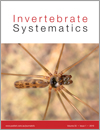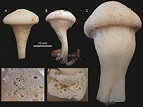
This paper documents the systematics of a new genus of orthotyline plant bugs, Xasmasoma, and the description of twelve new species. This further demonstrates the hyperdiversity of the family Miridae in Australia, and the biogeographic and host plant drivers of Xasmasoma diversification. The work provides the first molecular sequences of the Australian Orthotylini which corroborate the phylogenetic signal of the male genitalia.












